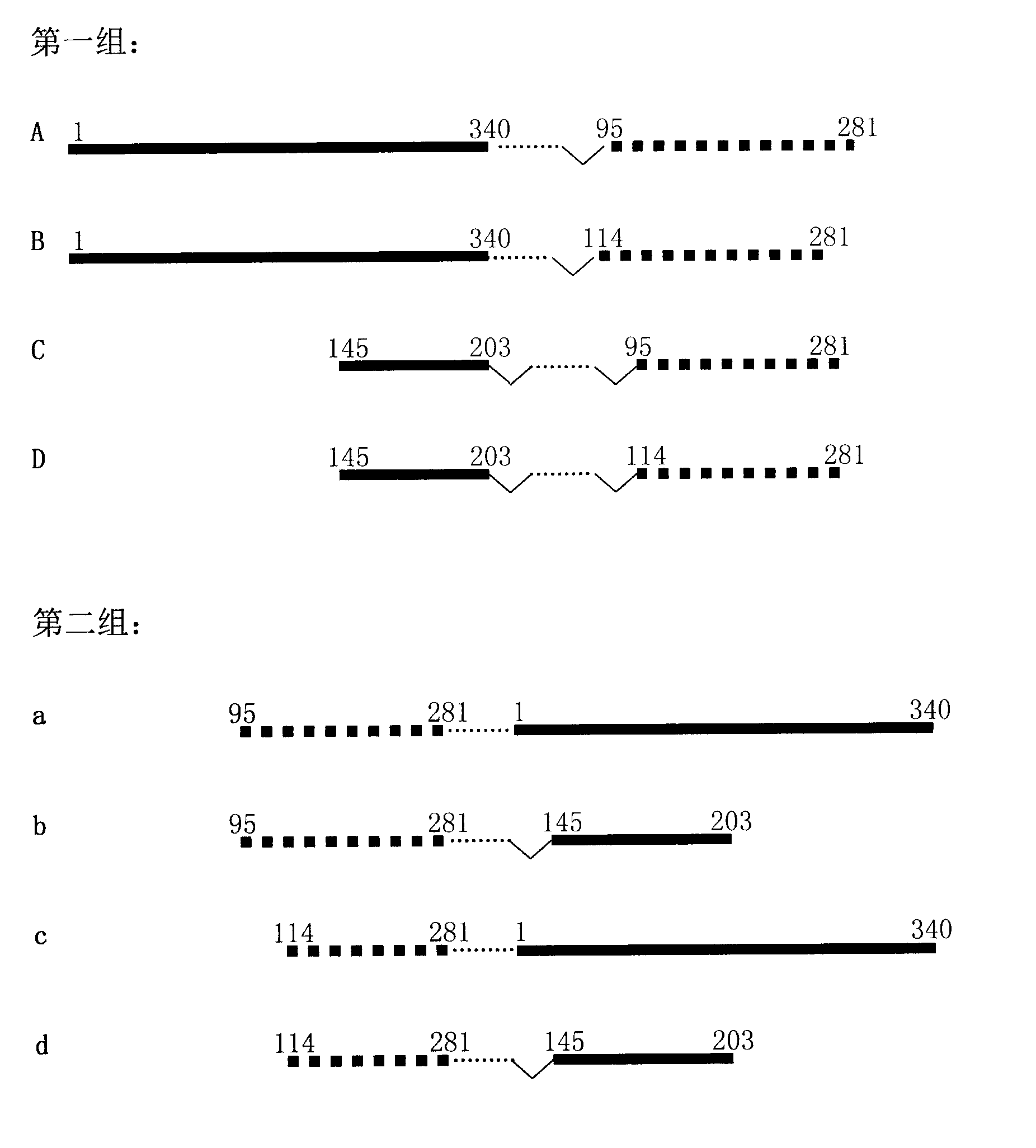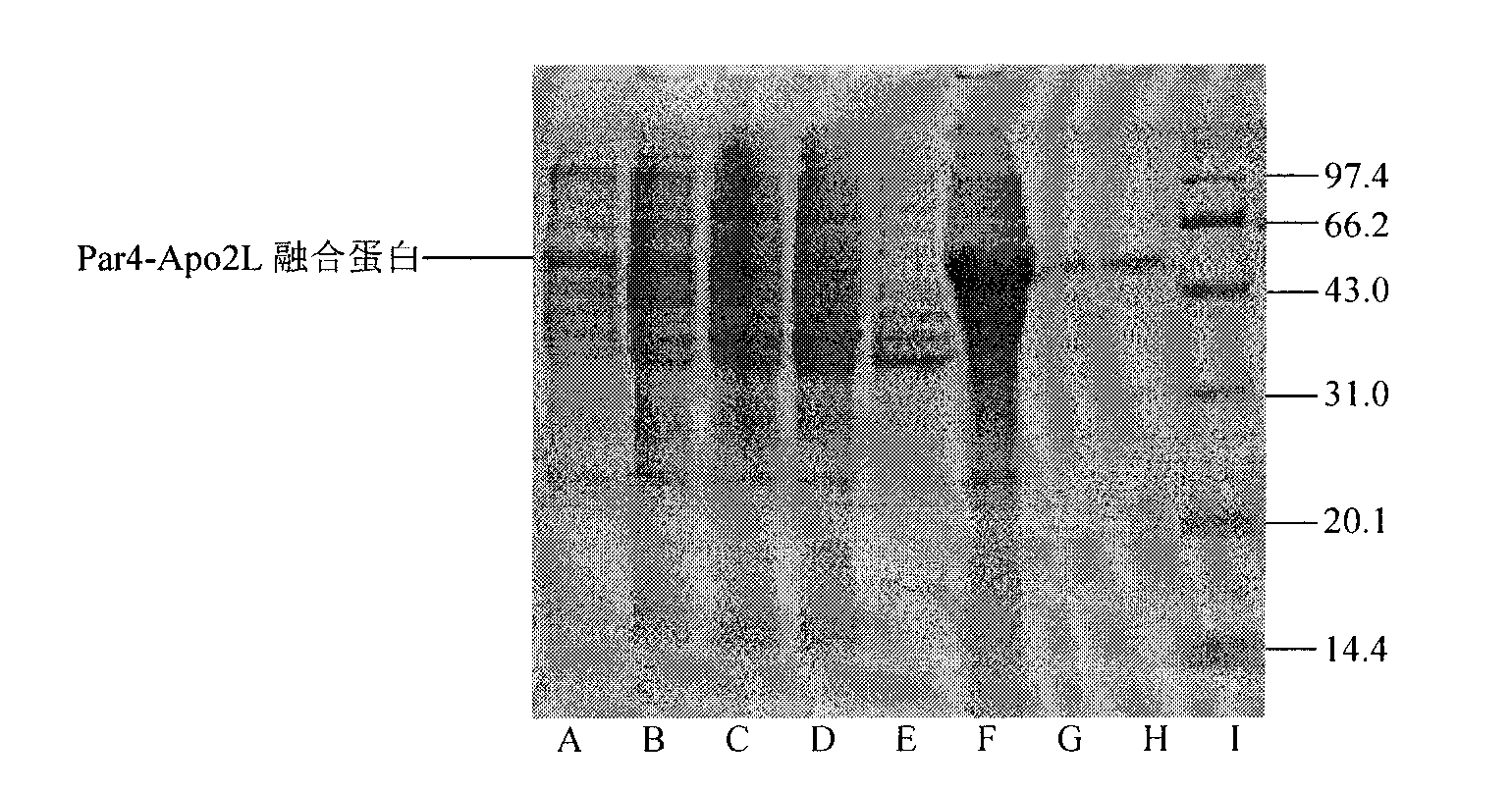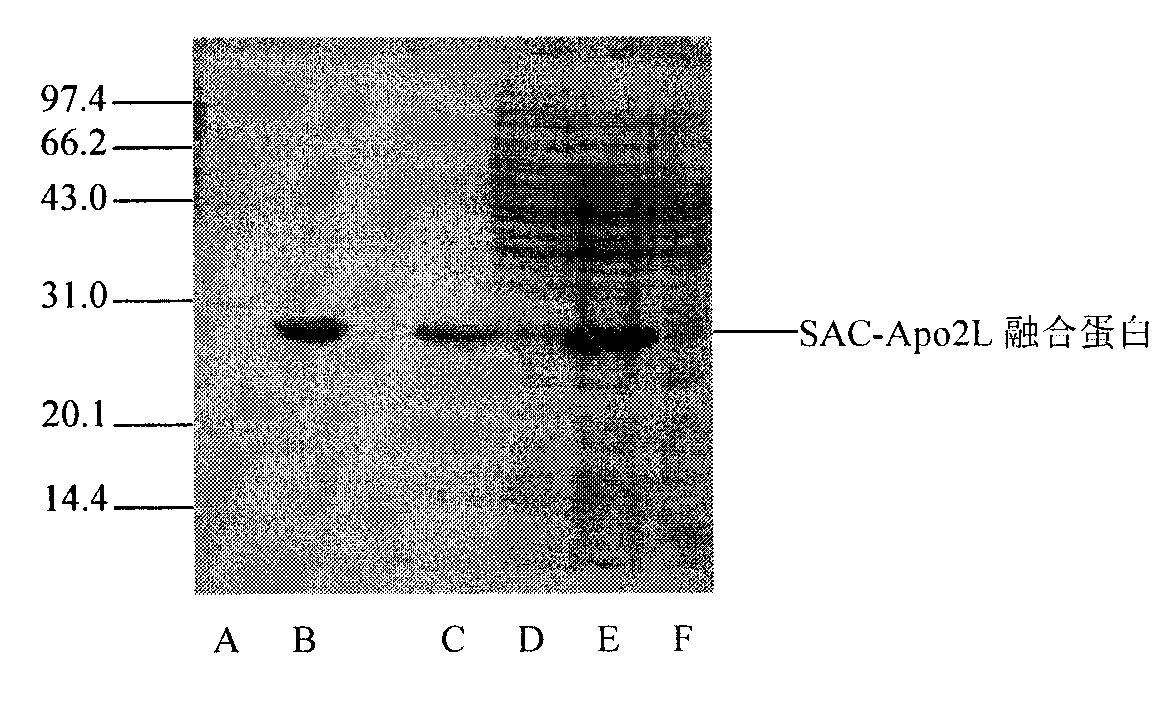Preparation method and application of human prostate apoptosis response protein 4 and apoptin 2 ligand fusion protein
A fusion protein, fusion protein technology, applied in the field of genetic engineering to prepare the fusion protein, can solve the problems of tumor cell apoptosis and the like
- Summary
- Abstract
- Description
- Claims
- Application Information
AI Technical Summary
Problems solved by technology
Method used
Image
Examples
Embodiment 1
[0052] Establish cDNA library and screen to obtain Par4 and Apo2L genes
[0053] 1. Preparation of total RNA from human peripheral blood mononuclear cells
[0054] Separate human peripheral blood lymphocytes with lymphocyte separation medium according to routine, use RPMI-1640 medium (GIBCO company), add 10% newborn calf serum (Hangzhou Sijiqing Biological Company), penicillin and streptomycin and culture until adherent, The mononuclear cells were obtained, and then stimulated with 10 μg / L endotoxin of Escherichia coli R595 for 2 hours to activate the mononuclear cells, and collected 10 7 Cells were extracted with a total RNA extraction kit (Qiagen Company) to obtain total RNA from human peripheral blood mononuclear cells.
[0055] 2. Establish cDNA library and screen Apo2L gene
[0056]The total RNA obtained above was purified with an Oligo-dT column (Qiagen Company) to obtain total mRNA, and the cDNA synthesis kit (Clontch Company) was used to synthesize the first and seco...
Embodiment 2
[0062] The coding sequence of Par4 was obtained by reverse transcription-polymerase chain reaction (ie RT-PCR)
[0063] 1. RT to obtain the first strand of cDNA of Par4
[0064] Using human prostate cell total RNA purchased from Clontech (USA) as a template and P1 as a primer, the first strand of Par4 cDNA was catalyzed by reverse transcriptase. Primers:
[0065] P1: 5'-CCA CAT TGA GTC TTG AAT CC-3' (SEQ ID NO.11)
[0066] 2. Polymerase chain reaction (PCR) amplification to obtain the Par4 coding sequence
[0067] Using the above-mentioned first strand of cDNA as a template, P1 and P2 as primers, Tag DNA polymerase catalyzes the synthesis and amplification of the Par4 coding sequence. After sequence analysis, the obtained DNA sequence was consistent with the Par4 coding sequence displayed in various databases, that is, the Par4 coding nucleotide sequence was obtained. Primers:
[0068] P2: 5'-TAC AAG CTC CTC CAA GC-3' (SEQ ID NO.12)
Embodiment 3
[0070] The coding sequence of Apo2L was obtained by RT-PCR
[0071] 1. Preparation of total RNA from human peripheral blood mononuclear cells
[0072] (1) Separating lymphocytes from human peripheral blood according to conventional methods, and then obtaining mononuclear cells by the adherence method;
[0073] (2) The mononuclear cells were activated with bacterial endotoxin to stimulate the cells to express more genes and increase the abundance of RNA, and the total RNA was extracted with an RNA extraction kit (Qiagen Company).
[0074] 2. Reverse transcription (RT) to obtain the first strand of cDNA of Apo2L
[0075] Using the above total RNA as a template and P3 as a primer, reverse transcriptase catalyzes the synthesis of the first strand of Apo2L cDNA. Primers:
[0076] P3: 5'-TCC AGG TCA GTT AGC CAA C-3' (SEQ ID NO.13)
[0077] 3. Polymerase chain reaction (PCR) amplification to obtain the Apo2L coding sequence
[0078] Using the above-mentioned first strand of cDNA...
PUM
 Login to View More
Login to View More Abstract
Description
Claims
Application Information
 Login to View More
Login to View More - R&D
- Intellectual Property
- Life Sciences
- Materials
- Tech Scout
- Unparalleled Data Quality
- Higher Quality Content
- 60% Fewer Hallucinations
Browse by: Latest US Patents, China's latest patents, Technical Efficacy Thesaurus, Application Domain, Technology Topic, Popular Technical Reports.
© 2025 PatSnap. All rights reserved.Legal|Privacy policy|Modern Slavery Act Transparency Statement|Sitemap|About US| Contact US: help@patsnap.com



